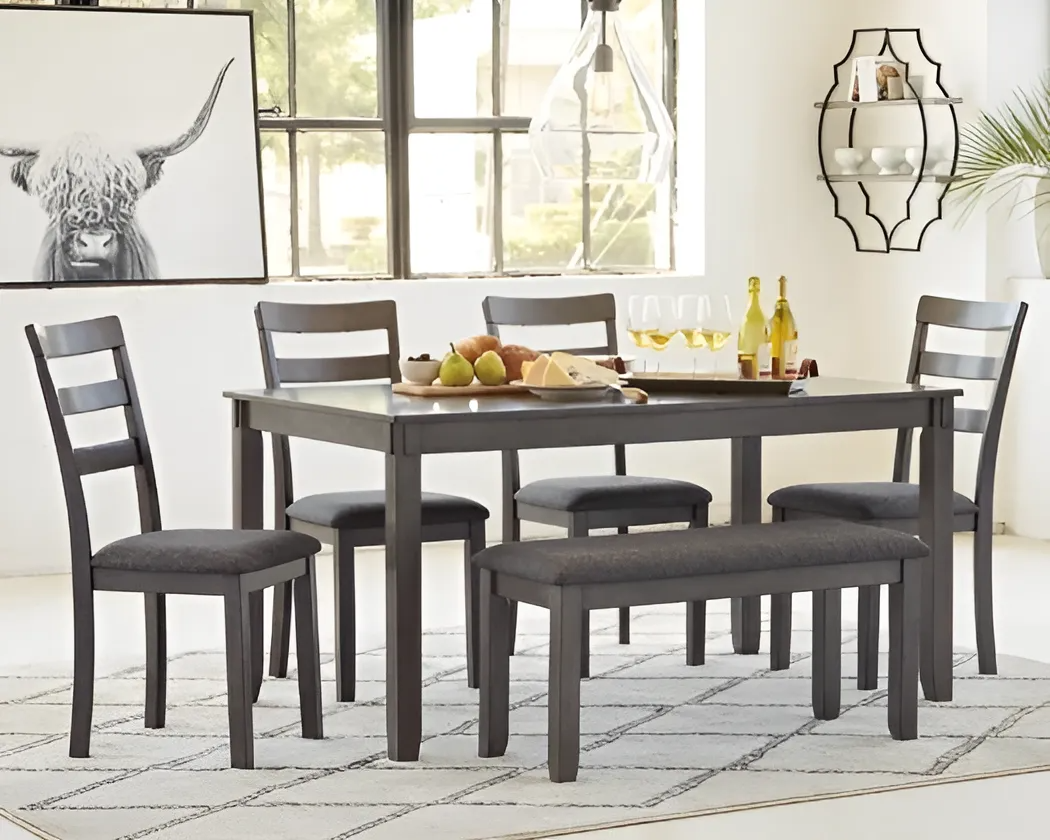
Role of Furniture in Interior Design
Whether you are an expert in the field or just someone who recently developed a keen interest in everything interior design-related, chances are you would have picked up on the integral role that furniture plays in designing a room.
A room marked with ill-fitting furniture can only make for an unpleasant sight. Not every furniture style is going to complement a specific room. In fact, the intended purpose of certain furniture might not even sit well in the room where they are currently situated. These instances are only one of several reasons that emphasise the definite need for you to select and procure the right furniture for every room in your house.
Original and creative interior design requires both stylish and practical furniture. Some of the most innovative yet functional interior designs are known to benefit from the strategic placement of furniture throughout the space.
Furniture generally serves as a focal point with which other items in the room are centred around with the intention of bringing out the desired look and feel of a living space. In that sense, furniture is considered a prominent element in interior design.
Here, we spotlight the fundamentals that make furniture a central feature in interior design and explain why they should take precedence when it comes time to give your interiors a facelift.
What are some of the must-have pieces to design a living room? What about the dining area? Before picking out the furniture for your upcoming design project, you want to give some thought to the intended purpose of a specific space. This will give you an idea of the furnishings you need most.
In essence, the combination of sofas, chairs, tables, beds, and other furniture help to indicate the intended purpose of a given space within your property.
For example, if you are planning a room designated for entertaining guests, you will naturally incorporate plenty of seating into the room design. But if your goal is to create a conducive working space, turn that area into an ergonomic corner with office desks and chairs where you can perform important tasks with ease.
Even the arrangement of these pieces of furniture can determine whether they are fully utilised in a given space. Putting the right furniture in the correct places can have a major impact on how you use and see your space. In the office, having sofas in the lounge area can be seen as a way to encourage collaboration among employees. Sofas in your living room also makes it the perfect spot for entertaining guests. Always take advantage of the fact that furniture can make for a spectacular focal point. Pick the one piece in your head that you believe clearly highlights the room's intended purpose and centre your design around it.
Make sure your other furnishings and decorative elements are positioned in a way that draws the eyes to that particular spot.
- Furniture establishes balance
The basic principle of design is balance. The idea is to make everything feel equal in terms of their visual weight or appeal. Visual weight has to do with achieving balance in a room. Imagine how you would feel if all your furniture were to be shifted to a similar side of the room.
Balance can also come in two forms.
The first type of balance is symmetry. This is achieved when the space is divided into two even sides that reflect one another. For instance, placing an even number of chairs on both sides of the table. That said, having too many objects or replicating this concept throughout the space can make your home look boring so you want to exercise moderation.
The second type is asymmetry. With this sort of visual weight, items are balanced without having any extra duplication. For instance, to balance out your living room, you want to keep a sofa on one side and two chairs on the other side of the room.
The best way to ensure visual balance is to simply rely on your eyes. Think you might have found a feasible arrangement that works? Step back for a few minutes and evaluate how the room looks in its entirety. That small shift in perspective should suffice in giving you an idea of whether one side appears to be weighted down compared to the other so that you can make any necessary adjustments.
A pro tip when dealing with several large and hefty pieces of furniture is to stagger their arrangement throughout the space to prevent one side from bogging down the other. Where possible, place larger items alongside smaller ones to introduce multiple points of visual interest.
- Furniture enhances flow of movement
On the topic of furniture arrangement, in addition to their role in defining function, these groupings also have a say in whether your friends and family are able to move through the space with ease.
In interior design, furniture and functionality work together in the space planning, where the allocation and division of interior space and furniture arrangement is decided based on the amount of space available.
Space planning involves circulation. Those who have attempted to squeeze their way out of an extremely cramped seating area will know the importance of leaving enough physical and visual breathing room. There is hence a need to ensure that guests are given an adequate amount of space for them to move freely. It also makes planning the space around the furniture as important as arranging the furniture itself. The goal in here is to maintain sufficient pathways between pieces so that people can navigate the room freely without bumping into each other or tripping over furniture. And in case you were wondering how much space to leave, there are some guidelines you can follow.
The first objective is to ensure the flow of traffic throughout the room by maintaining a minimum of two pathways in a room. To move about with ease, you need around 70 cm to 120 cm of width for major traffic routes and at least 60 cm of width for minor routes. So, keep the space clear of any bulky pieces of furniture that could potentially obstruct the course.
Ideally, you also want to arrange seating into clustered groupings in order to facilitate conversation, with the flow of movement centred around the respective seating groups and not through them. It is likewise recommended that you leave a gap of about three inches between furniture and the walls.
The same goes with making sure that you leave enough room for people to navigate between seats and tables. Furniture should be spaced at minimum 75 cm apart, with about half that distance between your coffee table and couch so everything is within reach.
At the end of the day, your furniture arrangement should account for an unobstructed path where people can traverse from one end of the room to another without difficulty.
- Furniture defines beauty
Beyond its practicality and ability to provide comfort, furniture also has the power to make or break the overall look and feel of a space. Your furniture must always align with the existing décor, layout, and style of a room. Overlooking this principle will result in a disorderly visual design. Just imagine stepping into a room adorned with traditional architectural details and material finishes, only to be rudely greeted by a collection of modern-looking furniture. For this reason, most people centre their decoration around their furniture and inculcate accessories that add to its appearance. That is because quality furniture is the foundation of interior design.
While ornamental details certainly enhance a space, the absence of proper furniture means it will only remain a non-functional room. Maintaining a delicate balance between style, function and aesthetics therefore requires careful consideration in the choice of furniture. The right furniture can play a leading role and greatly transform the available space in any room by lending the place a lasting appeal.
Ideally, furniture should also be used in conjunction with lighting, decoration, curtains, and flooring to achieve a striking overall appearance. Here, the aesthetic harmony between furniture, artistic detail and light ultimately brings about the dynamic design of the room. It does not matter whether the furniture used in the interior design of a room is simple, classic or overtly modern in appearance, the result should be a harmonious integration of the different elements to form a well-arranged whole. That said, choosing the right style of furniture can be tricky. With an abundance of unique styles to pick and choose from, the first step is to establish the look you want for each room and purchase the furniture that best brings the design to life.
Well-fitting furniture is after all the defining interior design element that weaves together all the different components into an aesthetically-pleasing room.
- Furniture provides comfort
A well-thought-out interior essentially improves the quality of life enjoyed by its occupants in terms of how comfortable and relaxed they feel at home.
Since each person has their distinct style, requirements and preferences, the furniture you decide on has to not only meet your expectations for comfort and convenience but also be able to express your personality and quirky sense of style. What this means is that each piece of furniture you choose needs to not only complement one another and add to the interior design, it also has to be able to make the room feel comfortable without overpowering it. Ideally, you want to choose furniture that can help you make the most of every room in your house and increase your productivity. Making clever use of furniture to create an aesthetically-pleasing room for greater efficiency and utmost enjoyment is the defining trait of a well-designed home.
As mentioned, the right furniture in a given space can help you achieve numerous goals with minimal obstacles. With the right furniture, you can seek respite as soon as you step into your home. Selecting the right furniture for your space hence rewards you with great comfort.







